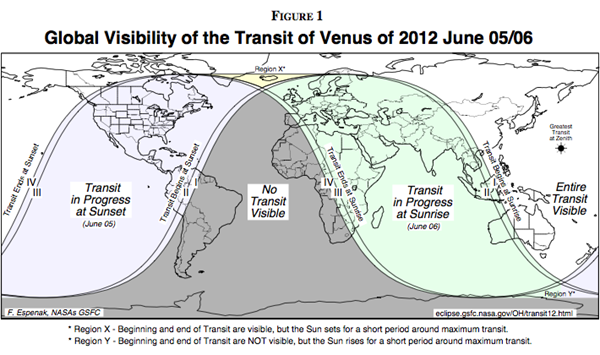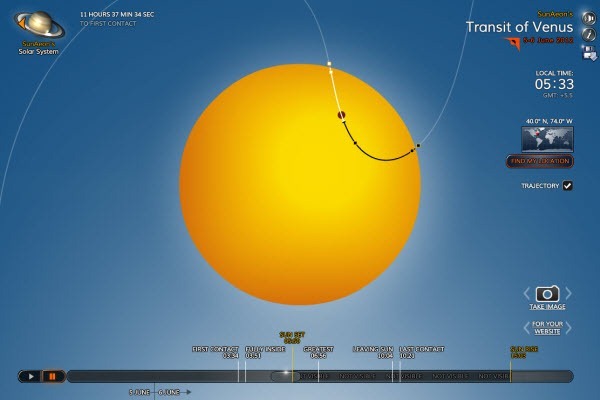One of the rarest celestial events of the century will occur tomorrow and will be viewable from select regions of the Earth. The planet Venus will trek across the disc of the sun, an event known famously as the Transit of Venus.
Transits of Venus are among the rarest of predictable astronomical phenomena. They occur in a pattern that repeats every 243 years, with pairs of transits eight years apart separated by long gaps of 121.5 years and 105.5 years. The next transit of Venus will occur on 5 and 6 June 2012, and will be the last Venus transit this century. The prior transit took place on 8 June 2004. Altogether only six such transits have been observed and recorded in human history. It is a real privilege to be alive during such an important period of time.

The transit will begin at 22:09 UTC on 5 June 2012, and will finish at 04:49 UTC on 6 June, during which the planet will appear as a small, dark disk moving across the face of the Sun. Admittedly, it will be as interesting as watching grass grow, yet the excitement among space buffs is palpable.
You can catch a live webcast of the transit on NASA’s website. Another way to view this event on your mobile phone is through the app VenusTransit, which is available on Android and iOS.
The phone app will allow citizens around the world to witness this rare phenomenon and to contribute their observation to a collective experiment to measure the sun’s distance. The phone app will assist the user in timing the transit and will also tell you the precise time when the transit will start based on your GPS location. After the transit, you can access your data on a map on our website.
You can lookup the timing of the various stages of the event for major cities on this page. If you can’t find your place, just punch your location into this converter to get the timing of the event in your local time.
A beautiful Flash animation of the transit is also available here.

Venus transits are historically of great scientific importance as they were used to gain the first realistic estimates of the size of the Solar System. Observations of the 1639 transit, combined with the principle of parallax, provided an estimate of the distance between the Sun and the Earth that was more accurate than any other up to that time. In addition, the June 2012 transit will provide scientists with a number of other research opportunities, particularly in the refinement of techniques to be used in the search for exoplanets.

Comments
Post a Comment